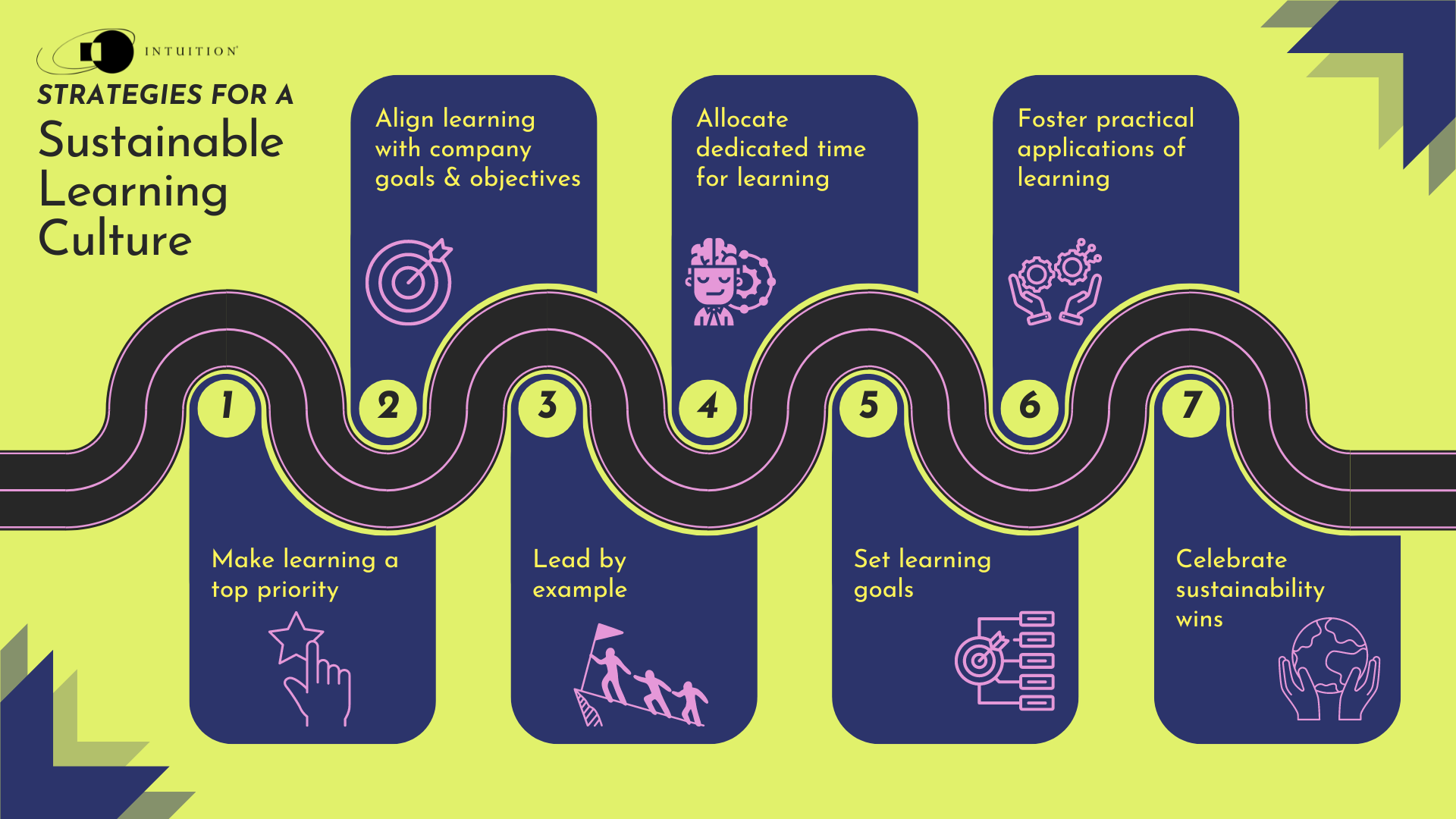How to use L&D in your 2024 sustainability strategy
Corporate sustainability strategy has emerged as critical for businesses in recent years. As organizations aim to mitigate their environmental impact and address social and economic concerns, it becomes evident that Learning and Development (L&D) teams play a vital role in supporting these increasingly onerous and involved sustainability efforts. By aligning learning programs with sustainable practices, L&D professionals can contribute to building a culture of sustainability within organizations.
This article explores the intersection of learning and sustainability strategy and provides helpful information for integrating sustainable learning practices into corporate learning programs.
The importance of a sustainability strategy in corporate learning
A sustainability strategy encompasses environmental, social, and economic dimensions, and it is essential for organizations to embrace sustainable practices in all aspects of their operations. According to the 2023 Learning Benchmarking Survey by the Brandon Hall Group, nearly 80% of companies report that their L&D teams are aligned with the needs of the business. This alignment presents an opportunity for L&D professionals to contribute actively to a sustainability strategy’s goals.

Building consistency through sustainable strategy training practices
One way L&D teams can support their sustainability is by ensuring consistency of practice across the organization. By developing learning programs that educate employees on sustainable practices, organizations can promote compliance and create a shared understanding of sustainable behaviors. Training can cover a range of topics, including energy efficiency, waste reduction, responsible resource consumption, and ethical business practices. By instilling these principles through training, organizations can cultivate a culture of sustainability.
Leveraging technology for scale and accessibility
Technology plays a crucial role in enabling sustainable learning at scale. L&D teams can leverage eLearning, microlearning, and video-based training to create easily repeatable and readily accessible learning experiences. These formats allow employees to access training materials anytime, anywhere, reducing the need for printed materials and travel-related CO2 emissions. Additionally, emerging technologies such as Virtual and Augmented Reality can provide immersive learning experiences that simulate real-world sustainability challenges.
Measuring impact through learning analytics
To manage sustainability efforts effectively, organizations need to measure and track their progress. By integrating learning analytics with sustainability data, L&D teams can demonstrate the impact of training activities on sustainability goals. Data-driven insights can help identify areas for improvement, track employee engagement, and showcase the organization’s commitment to sustainability. This information can also inform decision-making processes and drive continuous improvement in sustainability practices.
Adapting to rapid changes through agile learning
The pace of change in sustainability practices requires organizations to adapt quickly. Rapid eLearning technologies enable L&D teams to update learning content in real-time, ensuring that employees are equipped with the very latest knowledge and skills. This agility allows organizations to respond promptly to evolving sustainability regulations, industry standards, and emerging best practices. By embracing agile learning methodologies, L&D teams can keep pace with the dynamic nature of sustainability and support organizations in staying ahead of the curve.

Strategies for creating a sustainable learning culture
Establishing a sustainable learning culture involves integrating sustainability principles into the very fabric of an organization. By prioritizing sustainability in training initiatives, for example, organizations can foster employee engagement, drive innovation, and contribute to broader societal and environmental goals. Here are seven strategies for creating a sustainable learning culture:
1. Make learning a top priority
To create a sustainable learning culture, organizations must prioritize learning and development initiatives. Learning should begin from every employee’s onboarding process and continue throughout their career with the organization. By promoting structured learning through corporate learning programs, organizations can ensure that sustainability principles are ingrained in employees’ day-to-day practices.
2. Align learning with company goals and objectives
Effective learning programs should align closely with the organization’s strategic goals and objectives. By integrating sustainability training with broader company strategies, organizations can reinforce the importance of sustainability in achieving desired outcomes. This alignment ensures that employees understand how their individual contributions contribute to the organization’s overall sustainability efforts.
3. Lead by example
Leadership plays a vital role in establishing a sustainable learning culture. By demonstrating their own commitment to sustainability, an organization’s leaders inspire and engage employees to participate in the learning process. Leaders should initiate, direct, and invest in their own learning programs to set an example for their team members, highlighting their dedication to sustainability and fostering a culture of continuous learning..
4. Allocate dedicated time for learning
To prioritize learning, organizations should allocate dedicated time for learning sessions. Despite competing priorities, organizations should ensure that learning is not postponed or overlooked due to other pressing matters. By setting aside specific time slots for learning, organizations demonstrate their commitment to employee development and create a consistent learning routine.
5. Set learning goals
Setting clear learning goals is crucial for creating a sustainable learning culture. Organizations should communicate the benefits of learning and development, emphasizing how it contributes to personal and professional growth. By setting learning goals, organizations motivate employees to prioritize learning and provide a roadmap for their development journey.
6. Foster practical applications of learning
To enhance engagement, learning programs should focus on practical applications of knowledge and skills. By providing opportunities for employees to apply their learning in real-world scenarios, organizations reinforce the relevance of sustainability training. Interactive training formats, such as simulations and role-playing exercises, can further enhance engagement and problem-solving abilities.
7. Celebrate sustainability wins
Recognizing and celebrating sustainability achievements is vital for sustaining employee motivation and engagement. Organizations should establish a reward system that acknowledges employees and departments for implementing and following sustainable practices. By celebrating milestones and sharing success stories, organizations reinforce the value of sustainability and create a sense of collective achievement.
The future of learning and sustainability
As organizations navigate the complex challenges of the future, sustainability and learning will continue to intersect. By embracing sustainable learning practices, organizations can promote responsible consumption, foster innovation, and contribute to a more sustainable future. L&D professionals have a unique opportunity to lead the way by integrating sustainability principles into corporate learning programs. Through collaboration, innovation, and a commitment to continuous learning, organizations can unlock the path to corporate success while safeguarding the planet for future generations.
Remember, sustainable learning is not just a buzzword; it is a strategic imperative for organizations committed to long-term success. By prioritizing sustainability in learning initiatives, organizations can empower employees to drive positive change and contribute to a more sustainable future.


